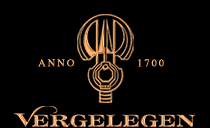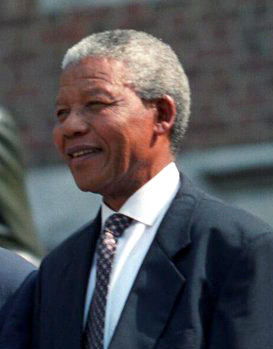
PinotagePIN-ə-tahzh is a red wine grape that is South Africa's signature variety. It was cultivated there in 1925 as a cross between Pinot noir and Cinsaut. It typically produces deep red varietal wines with smoky, bramble and earthy flavours, sometimes with notes of bananas and tropical fruit, but has been criticised for sometimes smelling of acetone. The grape is a viticultural intraspecific cross of two varieties of Vitis vinifera, not an interspecific hybrid.

Paarl is a town with 112,045 inhabitants in the Western Cape province of South Africa. It is the third-oldest city and European settlement in the Republic of South Africa and the largest town in the Cape Winelands. Due to the growth of the Mbekweni township, it is now a de facto urban unit with Wellington. It is situated about 60 kilometres (37 mi) northeast of Cape Town in the Western Cape Province and is renowned for its haunting scenic beauty and deep viticulture and fruit-growing heritage.

New World wines are those wines produced outside the traditional winegrowing areas of Europe and the Middle East, in particular from Argentina, Australia, Canada, Chile, Mexico, New Zealand, South Africa and the United States. The phrase connotes a distinction between these "New World" wines and those wines produced in "Old World" countries with a long-established history of wine production – most notably, France, Italy, Germany, Spain and Portugal.
Constantia is a South African dessert wine. It is made from Muscat Blanc à Petits Grains grapes grown in the district of Constantia, City of Cape Town. In the eighteenth and nineteenth centuries it was widely exported to Europe. However, production of Constantia ceased in the late nineteenth century following the devastation of South African vineyards by the phylloxera epidemic. Production resumed at Klein Constantia in 1986, at Groot Constantia in 2003 and at Buitenverwachting in 2007.

KWV South Africa (Proprietary) Limited is one of the leading wine and spirits producers in South Africa. Its brands include Roodeberg, KWV Wines & KWV Brandies, and Laborie.

The Australian wine industry is one of the world's largest exporters of wine, with approximately 800 million out of the 1.2 to 1.3 billion litres produced annually exported to overseas markets. The wine industry is a significant contributor to the Australian economy through production, employment, export and tourism.

Israeli wine is produced by hundreds of wineries, ranging in size from small boutique enterprises to large companies producing over ten million bottles per year.
South African wine has a history dating back to 1659, with the first bottle produced in Cape Town by its founder Jan van Riebeeck. Access to international markets led to new investment in the South African wine market. Production is concentrated around Cape Town, with major vineyard and production centres at Constantia, Paarl, Stellenbosch and Worcester. There are about 60 appellations within the Wine of Origin (WO) system, which was implemented in 1973 with a hierarchy of designated production regions, districts and wards. WO wines must only contain grapes from the specific area of origin. "Single vineyard" wines must come from a defined area of less than 6 hectares. An "Estate Wine" can come from adjacent farms if they are farmed together and wine is produced on site. A ward is an area with a distinctive soil type or climate and is roughly equivalent to a European appellation.

Vergelegen is a historic wine estate in Somerset West, in the Western Cape province of South Africa.

Spanish wine includes red, white, and sparkling wines produced throughout the country. Located on the Iberian Peninsula, Spain has over 1.2 million hectares planted in wine grapes, making it the most widely planted wine-producing nation, but the second largest producer of wine in the world, behind Italy and ahead of France and the United States. This is due, in part, to the very low yields and wide spacing of the old vines planted on the dry, infertile soil found in some of the Spanish wine regions. The country is ninth in worldwide consumption with Spaniards drinking, on average, 21.6 litres per person a year. The country has an abundance of native grape varieties, with over 400 varieties planted throughout Spain, though 88 percent of the country's wine production is from only 20 grapes — including the reds Tempranillo, Bobal, Garnacha, and Monastrell; the whites Albariño, Airén, Verdejo, Palomino, and Macabeo; and the three Cava grapes Parellada, Xarel·lo, and Macabeo.

Groot Constantia is the oldest wine estate in South Africa and provincial heritage site in the suburb of Constantia in Cape Town, South Africa.

Klein Constantia is a wine estate in the suburb of Constantia in Cape Town, South Africa.

Western Cape is a Geographical Unit within the Wine of Origin classification system of South African wine. Corresponding to the province of Western Cape it includes most of the vineyards in South Africa.

Algerian wine is wine made in Algeria. While not a significant force on the world's wine market today, Algeria has played an important role in the history of wine. Algeria's viticultural history dates back to its settlement by the Phoenicians and continued under Algeria's rule by the Roman empire. Just prior to the Algerian War of Independence (1954-1962), Algerian wine accounted for nearly two-thirds of the total international wine trade. With as much land under vine as the countries of Germany and South Africa, Algeria continues to maintain a wine industry with over 70 wineries in operation.
Charles Louis Back is the third-generation owner of South African wine and cheese producer Fairview, in Paarl in the Western Cape province. Fairview Estate is a third-generation family-owned farm, located on the slopes of the Paarl Mountain in the winelands of the Western Cape.

A winemaking cooperative is an agricultural cooperative which is involved in winemaking, and which in a similar way to other cooperatives is owned by its members. The members in a winemaking cooperative are usually vineyard owners, who deliver grapes to the cooperative, which is involved in production of wine from the grapes and the subsequent marketing activities.

Fairview Wine and Cheese farm is a South African producer of wines and cheeses based in the Paarl region of the Western Cape province. It is owned and run by Charles Back, who also owns The Goats do Roam Wine Company and The Spice Route Winery.
Foris Vineyards Winery is an American winery located near Cave Junction, Oregon in the Illinois Valley region of the Rogue Valley AVA of Southern Oregon. As one of Oregon's pioneering grape growers, Ted Gerber planted his first vineyard in 1974. For 15 years, Gerber provided fruit to other winemakers, until 1986 when the winery was founded by Ted and Meri Gerber and the Foris label was launched.
Thomas William Carlyon Angove AM was an Australian winemaker who is credited with the invention of the wine cask.

Bosman Family Vineyards is situated on the farm Lelienfontein in Wellington in the Western Cape, South Africa. The farm produces wines for the local and export market, and is home to one of the most influential vine nurseries in Africa.





















